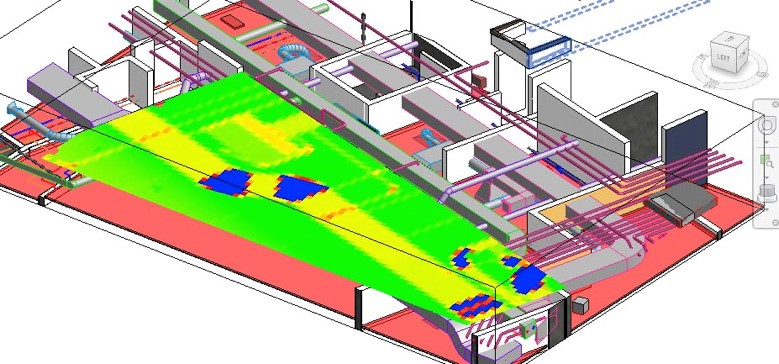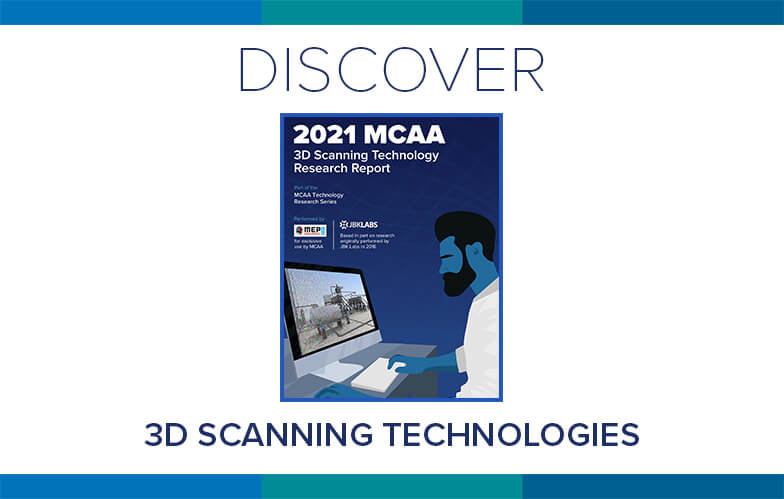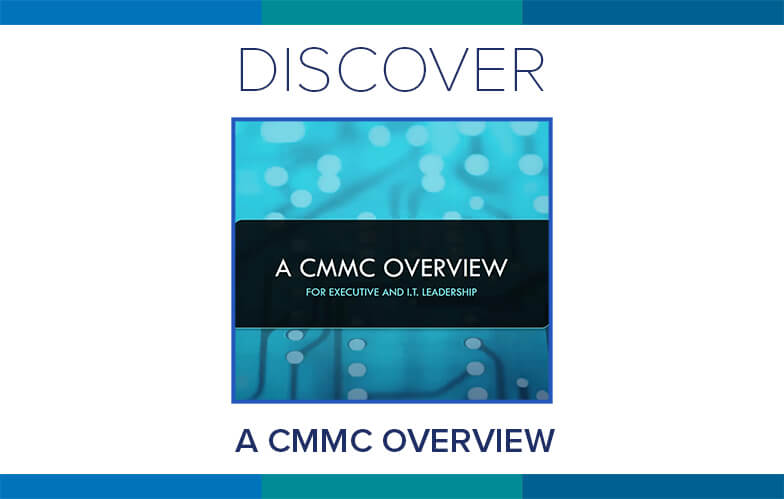
The Mechanical Contracting Education & Research Foundation (MCERF), the non-profit foundation of the Mechanical Contractors Association of America (MCAA), has been collaborating with BuildingSP, a California-based software developer, on a building analysis add-in for the Autodesk Revit building information modeling (BIM) platform. The Revit add-in is called the MCERF Complexity Measurement Tool (CMT) and analyzes a building’s mechanical, electrical, and plumbing (MEP) spaces for congestion and complexity.
The Goals of Creating the MCERF CMT
The MCERF CMT was created because complexity and congestion of spaces with MEP can be major obstacles, cost drivers, and schedule shifters for all construction projects. While the shift to BIM has transformed the industry, MEP subcontractors have a significant challenge to coordinate projects that are becoming more and more complex. MCERF and MCAA, like our member companies, believe that digital tools are an important and valuable part of construction. The MCERF CMT is being created to raise awareness of MEP congestion and complexity through measurable, reportable, and standardized values.
Figure 1: This is a medium-resolution CMT output, shown in Revit in 3D. Areas shown in blue are fully filled by MEP systems.
How the MCERF CMT Works
The MCERF CMT is a computational BIM tool that uses the Revit API to analyze, measure, report, and store information about complexity. The general theory of the MCERF CMT is to break up the building’s interstitial spaces into discrete columnar elements and measure how “filled” they are with MEP systems, structures, and other Revit families. Measured volumes that are highly filled are obviously congested.
T he add-in first identifies all the interstitial spaces used for routing MEP systems in a combined Revit model. It does this through a combination of dialog boxes to determine the level being analyzed, the programmatic identification of ceilings, and querying the structural decks above these ceilings. The MCERF CMT then measures the volume of space that is filled with MEP systems and other Revit elements, including Industry Foundation Class (IFC) file elements. The add-in includes the space that is within a system (such as the interior of a duct) as being part of the filled volume. The CMT complexity metric is then the ratio of filled space to total volume. Finally, the add-in uses Revit’s analytics graphics to overlay a “heat map” on the plan view. This heat map has gradients of colors that correlate to low and high levels of congestion. Blue is the most congested (from 90% to 100% filled) and green is the least congested.
Figure 2: This side-by-side comparison of a standard Revit model with the output from CMT demonstrates how the added insight from the CMT is important to understand potential coordination problems.
Technical Specifications of the MCERF CMT
The MCERF CMT works with the latest versions of Revit 2016, 2017, and 2018. If your computer meets the minimum requirements for Revit, it can run the MCERF CMT. The tool can be run on a single Revit space or on a given Revit Level. It can work on projects with unusual shapes and on floors with different ceiling heights.
The MCERF CMT Will Be Free to Use
The MCERF CMT will be distributed free of charge for use by the architecture, engineering, and construction (AEC) industry. This distribution is aligned with the MCAA and MCERF’s goals of outreach and industry support.
The MCERF CMT Is Enabling Opportunity
Through the beta testing currently underway, it is clear that the MCERF CMT is an enabling tool that creates opportunities for the industry to engage in new and exciting forms of analysis. Prior to this tool, the industry never had a unified method of characterizing MEP spaces and generating metrics that could be used by teams, projects, and enterprises. The BuildingSP team, along with their beta testers, has been using the MCERF CMT to data mine, investigate, and benchmark 3D models on projects. For example, the MCERF CMT is able to provide metrics to answer the following questions:
- How does congestion vary by project type?
- How does congestion grow from design into coordination and then into construction?
- By what percentage do design models differ in routing from design through construction?
- How do project scope changes alter congestion and affect coordination?
- How does congestion vary down a corridor and what strategies are successful for managing the most challenging congestion?
- What MEP congestion levels and characteristics lend themselves to maintainability? Constructability?
Figure 3: This is a high-resolution output of a high-congestion area at the building core at 50% CD. What can we learn from this image and the accompanying metrics?
Summary
More information, including features and demonstration videos, is available on the MCERF website. The MCERF CMT has been in active development since 2016. It has been released as a beta for testing to select MCAA member companies and design firms. It will be released for public use at the MCAA Technology Conference in Austin, Texas, on November 8, 2017 and will be compatible for Autodesk Revit 2016 and subsequent versions.
For inclusion in the beta program, contact Sean McGuire at smcguire@mcaa.org. For technical details about the MCERF CMT, contact Brett Young at brett@buildingsp.com.
About MCAA and MCERF
The Mechanical Contractors Association of America, Inc. (MCAA) serves the unique needs of approximately 2,800 firms involved in heating, air conditioning, refrigeration, plumbing, piping, and mechanical service. MCAA does this by providing its members with high-quality educational materials and programs to help them attain the highest level of managerial and technical expertise. Mechanical Contracting Education and Research Foundation (MCERF), the non-profit foundation of the MCAA, furthers this mission through outreach to the AEC community, as well as the public at large.
About BuildingSP, Inc.
BuildingSP, Inc. is a California-based software development firm focused on improving BIM workflows through design automation and advanced computation. Its work in clash-free autorouting of building systems and real-time clash detection has been recognized globally as the path forward for BIM and virtual design and construction. For more information, visit http://www.buildingsp.com.







